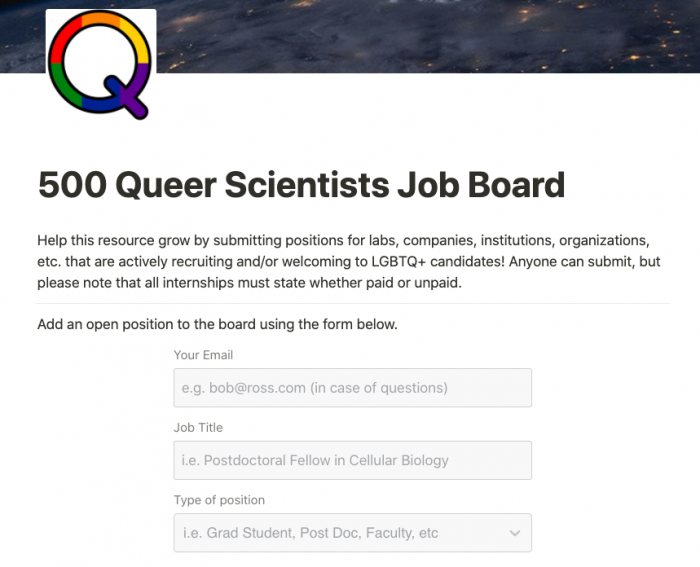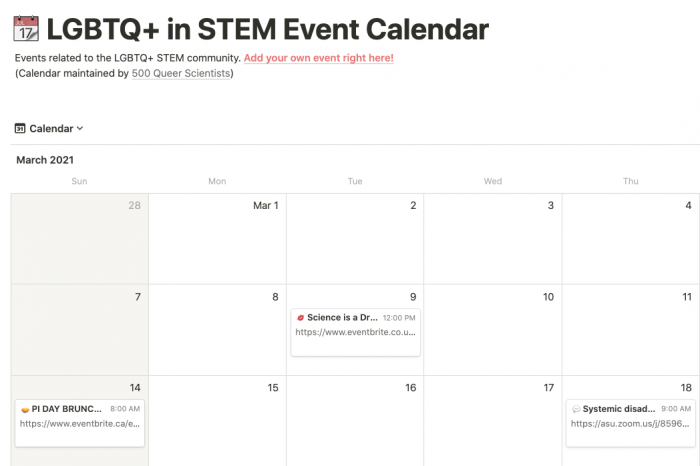Show me the facts!
Why is visibility for LGBTQ+ STEM workers so critical? The studies, reports, and surveys below offer a small window into the reality of the professional and academic environments—environments in which we face higher rates of exclusion, harassment, assault, and more than straight colleagues, and (in 28 states) can still be legally discriminated against by employers.
- A 2013 survey of STEM workers found that more than 40% of LGBTQ+ identified respondents working in STEM fields are not out to their colleagues. [1]
- In 28 states it’s still legal for employers to discriminate against someone for their sexual or gender identity. [2]
- A 2018 study found that undergraduate sexual minority students were 7% less likely to be retained in STEM compared to switching into a non-STEM program, and 14% less likely to stay in a STEM major if they have had a research experience (typically associated with retention in STEM the pipeline). [3]
- A 2014 study of STEM faculty at universities found that 69.2% of ‘out’ faculty members felt uncomfortable in their university department, and that those who were out were 7.2 times more likely to experience exclusionary behavior by colleagues. [4]
- According to the Association of American University’s Climate Survey on Sexual Assault and Sexual Misconduct (2015), transgender, genderqueer, and gender-non-conforming undergraduate and graduate students reported the highest levels of on-campus sexual assault and misconduct. [5]
- The Association of American University’s Climate Survey on Sexual Assault and Sexual Misconduct reported that 60% of LGBTQ students reported incidences of sexual misconduct and harassment; comparatively, only 45% of their heterosexual classmates did the same. [5]
- A recent report on the LGBQ climate in physics has drawn attention to some of the major issues faced by sexual minority STEM professionals, including a heterosexist climate that reinforces gender role stereotypes in STEM work environments, a culture that requires, or at least strongly encourages, LGBQ people to remain closeted at work, and a general lack of awareness about LGBQ issues among STEM professionals. [6]
- In June 2016, Chemical Engineering and News conducted an informal poll of its readers to look more closely at the experiences of LGBT individuals in the chemistry community. Of the 270 who responded, 44% said they had felt excluded, intimidated, or harassed at work in the course of their career. [7]
- A study of LGBT professionals published in 2019 found that “heteronormative assumptions frequently silence conversations about gender and sexuality in STEM workplaces and result in complicated negotiations of self for queer professionals.” [8]
- A study of LGBT workplace experiences in the US Federal Government found that despite “expansive non-discrimination policies and bureaucratized accountability structures that formally protect LGBT employees”…”inequalities are pervasive within STEM-related agencies, extend across age cohorts and supervisory status, and exist for both LGBT-identifying women and men. [9]
REFERENCES
- Jeremy B. Yoder & Allison Mattheis. (2016) Queer in STEM: Workplace Experiences Reported in a National Survey of LGBTQA Individuals in Science, Technology, Engineering, and Mathematics Careers. Journal of Homosexuality, 63:1, 1–27, DOI: 10.1080/00918369.2015.1078632
- Human Rights Campaign (2018) http://www.hrc.org/state-maps/employment
- Bryce E. Hughes. (2018) Coming out in STEM: Factors affecting retention of sexual minority STEM students. Science Advances, 4:3, eaao6373, DOI: 10.1126/sciadv.aao6373
- Eric V. Patridge, Ramon S. Barthelemy, Susan R. Rankin. (2014) Factors Impacting the Academic Climate for LGBQ STEM Faculty. Journal of Women and Minorities in Science and Engineering, 20:1, 75–98, DOI: 10.1615/JWomenMinorScienEng.2014007429
- Association of American Universities (2015) Climate Survey on Sexual Assault and Sexual Misconduct, https://www.aau.edu/key-issues/aau-climate-survey-sexual-assault-and-sexual-misconduct-2015
- Timothy J. Atherton, Ramòn S. Barthelemy, Wouter Deconinck, Michael L. Falk, Savannah Garmon, Elena Long, Monica Plisch, Elizabeth H. Simmons, Kyle Reeves. LGBT Climate in Physics: Building an Inclusive Community (American Physical Society, College Park, MD, 2016).
- Linda Wang. (2016) LGBT chemists seek a place at the bench. Chemical Engineering and News, 94:41, 18–20.
- Allison Mattheis, Daniel Cruz-Ramírez De Arellano & Jeremy B. Yoder (2019) A Model of Queer STEM Identity in the Workplace, Journal of Homosexuality, DOI: 10.1080/00918369.2019.1610632
- Erin A. Cech & Michelle V. Pham (2017) Queer in STEM Organizations: Workplace Disadvantages for LGBT Employees in STEM Related Federal Agencies, Soc. Sci. 2017, 6(1), 12; https://doi.org/10.3390/socsci6010012
Professional organizations
National Organization of Gay and Lesbian Scientists and Technical Professionals
oSTEM (Out in Science, Technology, Engineering, and Mathematics)
Some good reading!
- GLAAD 2018 Accelerating Acceptance Report
- Scientific American: What’s It Like to Be Queer in STEM?
- Wired: Opinion Piece- Trans Researchers Are Struggling To Stay In Science. That Has To Change
- Science Magazine: Shattering the glass closet
- Science Magazine: Closeted discoverers- Lesbian, gay, bisexual, and transgender scientists
- New York Times: Why is science so straight?
- Science News for Students: Proud to be different in STEM


